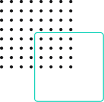Nitschke Nancarrow Accountant Kym Nitschke untangles the facts about the difference between the Medicare levy and the Medicare surcharge.
What You Should Know About the Medicare Levy
Most Australian taxpayers are paying a levy of 2% of their taxable income. This levy enables Australian residents to receive the health care they need. Depending on your income, you may only need to pay a reduced amount or none at all. Other exemptions and conditions may apply in your case depending on your family situation.
Do You Qualify for a Medicare Levy Reduction?
As of tax year 2015-2016, the Medicare levy doesn’t apply if your taxable income is $21,335 or less (or $33,738 for pensioners and seniors).
If your taxable income falls between $21,335 and $26,668 ($33,738 and $42,172 for pensioners and seniors), then you are eligible for a reduced levy.
As of the 2015-2016 tax year, you do not qualify for the Medicare levy reduction if:
1. You are single without any dependents and
2. You earn more than $26,668 in taxable income ($42,172 if you’re a senior or pensioner)
Your levy will be reduced if you make no more than $45,001 in taxable income ($58,707 for pensioners and seniors), in addition to $4,132 for each of your dependent children.
What if you don’t qualify?
You may still be eligible for a Medicare levy exemption if you meet certain conditions such as:
– Being a Norfolk Island or foreign resident
– Not being entitled to Medicare benefits
Medicare Levy and Medicare Levy Surcharge – The Difference
You don’t have an option when it comes to the Medicare levy. It’s a compulsory tax. This levy automatically applies to your taxable income if you earn at least $21,335 a year.
The Medicare Levy Surcharge is an additional tax you must pay only if you don’t have private hospital insurance while earning above a certain threshold ($90,000 for singles and $180,000 for families).
How Does the Medicare Levy Surcharge Work?
Australian taxpayers who don’t have private medical insurance but earn above a certain income level are required to pay the Medicare levy surcharge (MLS). This charge encourages people to take out private hospital insurance. The kicker is that this charge is stacked on top of the Medicare levy itself.
At what point are you not required to pay this surcharge?
Single people can’t have more than $90,000 in taxable income and families cannot exceed $180,000. Even if your family’s total income exceeds this threshold, you still won’t have to pay if your own income was $21,335 or less.
The following table demonstrates how the Medicare levy surcharge is calculated based upon income:
| Threshold | Tier 1 | Tier 2 | Tier 3 | |
| Singles | $90, 000 or less | $90,000-$105, 000 | $105,001-$140,000 | $140, 001 or more |
| Families | $180, 000 or less | $180, 001-$210, 000 | $210, 001 -$280, 000 | $280, 0001 or more |
| Rates | 0.0% | 1.0% | 1.25% | 1.5% |
What This Means for Your Tax Return
If it turns out that you need to pay the MLS on top of the levy, the amount you pay will depend on the number of your dependents. The MLS is deducted straight from your pay over the course of the year. If you’re actually under the income thresholds, you can claim back this amount. It’ll be indicated on your yearly assessment notice.
Having private hospital health insurance means that you’re exempt from the MLS. The Medicare levy will still be deducted at 2% of your (taxable) income, however.
You might even be eligible for a rebate on your private health insurance. This is how the government contributes toward your cost of private health insurance premiums.
How to Understand the Rebate
To qualify for the rebate, it’s tested against your income. The more you make, the smaller your rebate will be. Many people claim this rebate to reduce how many premiums they pay on their private health insurance.
As an alternative, you can opt for a refundable tax offset when you go to lodge your tax return. The percentage of your rebate is adjusted on the first of April every year.
Are you ready for the Medicare levy and any possible surcharges? Want more help in understanding the private health insurance rebate?
Let our team help you figure it all out. Give us a call on (08) 8379 9950 or send me an email.
– Kym Nitschke














